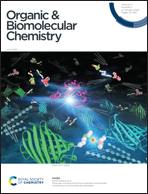Progress in copper-catalysed/mediated intramolecular dehydrogenative coupling
Abstract
Transition metal-catalysed C–H functionalization reactions are one of the most efficient synthetic methodologies to construct carbon–carbon and carbon–heteroatom bonds. The initial developments in the field were largely dominated by expensive transition metal catalysts. However, in the past decade, the focus of the catalyst shifted to first-row transition metals and copper catalysis contributed significantly. Abundant, cost-effective, and less toxic copper catalysts are an ideal green alternative to palladium and similar metals. The intramolecular dehydrogenative coupling itself developed as a prominent area of focus as the strategy straightaway affords complex polycyclic scaffolds in one pot. Regioselective activation of inert C–H bonds were made possible with copper catalysts and interestingly, oxygen served as the terminal oxidant in most of the cases. In the present review the focus is on the intramolecular dehydrogenative coupling reactions between carbon–hydrogen and heteroatom–hydrogen bonds to afford carbon–carbon and carbon–hetero atom bonds, catalysed/mediated by copper salts. Though the intermolecular dehydrogenative coupling reactions of copper have already been reviewed more than once, to the best of our knowledge this is the first comprehensive account of copper-based intramolecular dehydrogenative coupling.



 Please wait while we load your content...
Please wait while we load your content...